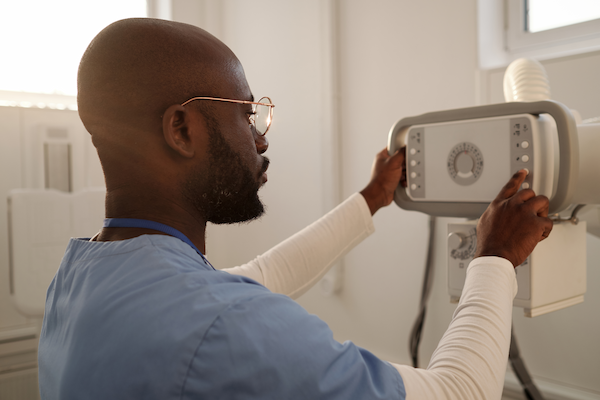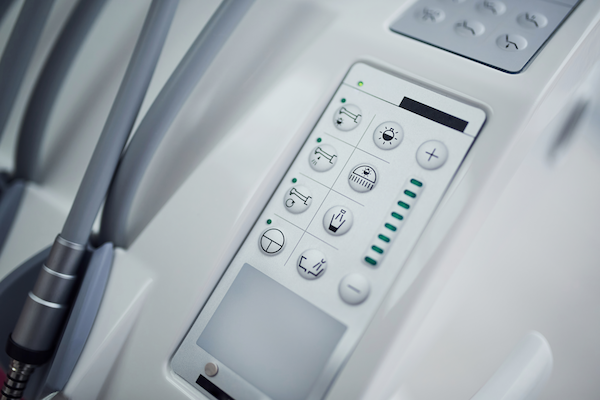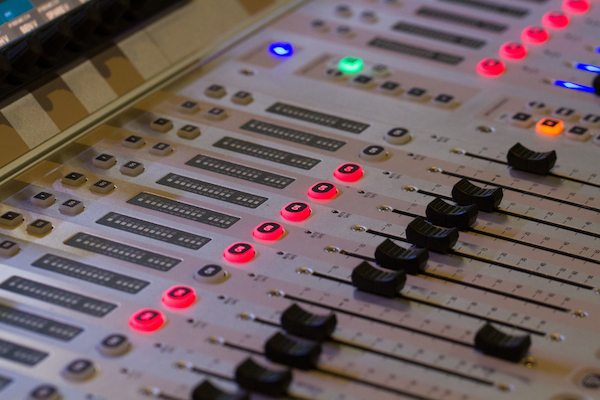Creating the perfect device or piece of equipment can be tricky. Every aspect needs to be designed with the end user in mind.
But how can you know exactly what your user needs to be efficient? With lots of testing and designing and a few basic UI design principles in mind.
In this article, we will discuss:
- What is UI design?
- What is a user interface?
- Why is UI design important for your membrane switch and devices?
- UI design principles
- Elements to consider when designing switches
Let’s dive in!
What is UI Design?
UI stands for the user interface. UI design is also known as user interface engineering.
This means the design is focused on the user’s experience and their interaction with your device.
Your main goal is not to create just a visually appealing device but design one that is simple and easy to use. A good UI design uses UI design principles to guide every element when creating components.
What Is a User Interface?
The user interface is what connects humans and machines. It can make a huge impact on the way someone interacts with your device.

A user interface has the basic common elements.
Input Controls:
- Buttons
- Checkboxes
- Dropdown Lists
- Data Fields
- Text Fields
- Toggles
Navigational Components:
- Slider
- Tags
- Icons
- Search Field
- Breadcrumb
- Pagination
Informational Components:
- Progress Bar
- Notifications
- Message Boxes
- Tooltips
Containers:
- Accordion
When choosing which components and controls to use, you will want to consider UI design principles.
Why Is UI Design Important for Your Membrane Switch and Devices?
Graphic overlays are printed interfaces that can help users effectively interact with your device when designed properly and with UI design principles in mind.
When creating membrane switches or graphic overlays, you need to consider UI design to ensure the safety and efficiency of the user.

If you are creating devices for demanding applications, such as those for the medical industry, someone’s life can rest in the hands of the user of your device. When it comes down to it, the medical professional does not care if the device is sleek looking- they want something functional.
UI Design Principles
When designing your graphic overlay and membrane switch, here are a few design principles to consider.
Focus On What Delivers Value
Function over form. Let us say that again in case a designer didn’t hear us. Form always comes after function!
While you want your equipment to be aesthetic if someone can’t use it adequately then it’s not beneficial. Every element should have a purpose and make a positive impact on the user’s experience.
The designer needs to be a problem solver and create solutions for the user.
Before adding an element to your design, ask yourself, “Why are you adding this?” if the answer is, “Because it looks good,” then you are focusing on the wrong thing.
Frustration-Free
Your goal is to reduce friction for the user. Remove any unnecessary steps to get their desired result.
You want to make their job easier and help them reach their goals. Some ways you can do this is by simplifying navigation and removing the number of clicks it takes to get to their intended destination.
Pro tip: Watch how people interact with your prototype to see what changes need to be made to make things easier.
Keep It Simple
Your interface shouldn’t feel like work. Keep the interface simple and do not use elements that are unnecessary.
You also want to keep all messaging simple with clear language.

If things are too complicated, the user can get confused and not know how to interact with your device. They should be able to easily tell what each button does and feel confident in their ability to use it.
When people can’t understand your device, they won’t want to use it.
Consistency Is Key
The first way to stay consistent is by using common elements in your user interface so that the user can easily identify elements. When they are able to recognize familiar elements, it can make them feel more comfortable.
You also want to remain consistent in your use of language, design, and layout throughout all of your devices. This way, the user of your equipment or devices can easily transfer their knowledge.
Use Font Size, Colors, and Textures Deliberately
Your use of colors and font size can impact how the user views your interface. With just a simple change, you can bring attention to an important element.
The typography or colors you choose can create clarity and a hierarchy.
For example, big red text can warn the user of danger. You can also make a button of importance a dome with tactile feedback so it can be easily located.
Speaking of tactile feedback, this brings us to our next section: elements to consider when designing your custom membrane switch.
Elements To Consider When Designing Switches
When designing your interface, there are a few elements that are important to consider. The better you understand the benefits of these elements, the easier it will be to craft the perfect device.
Tactile or Non-Tactile
A tactile switch provides the user feedback when pressed. This is a great way to help the user feel confident they pressed a button.
This is important for devices that may need to be used when the user can’t look. For example, when creating switches for an airplane cockpit, you would want to incorporate tactile switches.
LED Backlighting
If your device will be in a dark location, you want to add LED backlighting to your membrane switch. This can help make it easier to find when visibility might be an issue.

An LED light when unnecessary can be wasteful, using more energy than needed and possibly taking up space.
Materials
Choosing the right material for your design is all about considering its purpose. Two common graphic overlay materials are polycarbonate and polyester.
But if you are going to be putting your graphic overlay on a device that will be in extreme conditions, you may want a metal substrate like Metalphoto.
Design Your User Interface With Hallmark Nameplate
At Hallmark Nameplate, we understand the importance of incorporating UI design into your devices. When we assist you in manufacturing your membrane switch or graphic overlay, our experienced designers will work with you to craft a simple and functional interface.
We will ensure that not only does it meet all certifications, but it is designed to make the user’s experience stress-free. Additionally, we always use durable materials to ensure your devices last.
Request a quote today and create equipment and devices that people want to use.




